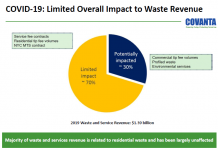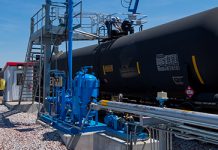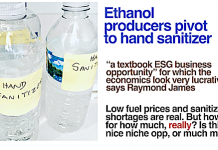Jim Lane
E85 ethanol? Been stuck with low sales for years – with producers pointing to “no market access”. Yet, Tesla was faced with “no market access” and built its own market. What lessons can be learned?
Last week, Tesla Motors (NASD:TSLA) announced the completion of its transcontinental US Supercharger Corridor, a network of stations that enable Model S owners to (somewhat) rapidly recharge their Teslas on a cross-country drove. And intrepid Tesla blgger Hamish McKenzie relayed the news last week that two Tesla Model S sedans completed a 76-hour coast-to-coast all-electric crossing.
The news follows closely on the announce from last October that Tesla had completed its West Coast Supercharger Corridor, a network of stations between San Diego, California and Vancouver, British Columbia.
Tesla Superchargers are substantially more powerful than any other charging technology providing half a charge in as little as 20 minutes via Superchargers that are strategically placed along major highways connecting city centers.
How much do you pay for a recharge? A dollar per KW, 20 cents, a dime, a nickel?
Actually, Tesla gives you the power for free.
In terms of alternative fuels technology, you have to salute their achievement. They’ve taken a long-mentioned problem with all-electrics the absence of rapid recharging stations that shuts down the effective range of the vehicles and turned it in to a product advantage.
Turning to E85 ethanol’s market access woes
Turning to liquid alternative fuels such as E85 ethanol it goes without saying that the Renewable Fuel Standard would be intact if the ethanol industry had been so intrepid and built a network of E85 stations that addressed that fuels’ challenges as adroitly as Tesla addressed theirs.
It is a different challenge, of course. It’s not about extending range, since there are already 3,000 stations in place nor about repaid fill-up, since E85 fills up rapidly. The issue with E85 is cost. 85-cent E85 gets them lining up around the corner. $3.00 E85 is a non-starter that has been failing ever since it was brought to the market.
In the case of Tesla, they correctly concluded that oil companies were not going to build a network for them thereby handing a new market Government funds are sometimes available, but grants are unreliable in size and scope. Your friend at the state or national capital might just be as likely to build something you don”t really need, at a cost you can’t afford. Consider, for example, the $1 million per outlet that California is spending on building a hydrogen fueling station network.
According to the Digesterati, who provided some figures on the subject this week, there are now more than 15 million flex-fuel cars built in the US, with 5 million new vehicles on the street just last year. Detroit has done a good job.
Now, the world does not need blender pumps, it needs low-cost fuels low enough to induce people to make a switch. Which is to say, more than a 50-cent discount to conventional fuels. In fact it needs an 85-cent discount – available every day.
Who’s going to provide that? Ethanol producers, via their own network. One corridor of, say, 20 stations coast-to-coast, saving drivers 85 cents per gallon and providing a lesser, but still notable, reduction in cost per mile. Backed by meaningful promotion.
That’s the kind of publicity that drives market awareness, market acceptance. Makes a flex-fuel vehicle something worth having, something worth understanding. Sure, early adopters care about carbon, but the mass market cares about price and performance
Consider the math this way.
If just half of the 15 million drivers with flex fuel cars chose E85 just half the time, that would equate to roughly 2.25 billion gallons of additional demand per year. The Renewable Fuel Standard would not have any problems based on blend wall, today.
Demand begins with acceptance, acceptance begins with experience, experience begins with incentive.
If every ethanol producer contributed one penny per produced gallon at an E85 development fund, that would represent enough cash to outfit 125 stations with a blender pump and 200 gallons per day of discounted fuel, for one year. With plenty left over for promotions like 85-cent per gallon fuel-ups on special days, or at special locations.
That’s would equate to an average range distance of 150 miles between E85 stations, which is to say that you could drive just about anywhere in the US on discounted fuel.
That’s a market solution to the blend wall problem that costs the taxpayer nothing, and does not require a separate mandate, incentive, tariff, subsidy, grant or tax credit.
Here’s the data on those 15 million flex-fuel vehicles.
Jim Lane is editor and publisher of Biofuels Digest where this article was originally published. Biofuels Digest is the most widely read Biofuels daily read by 14,000+ organizations. Subscribe here.








